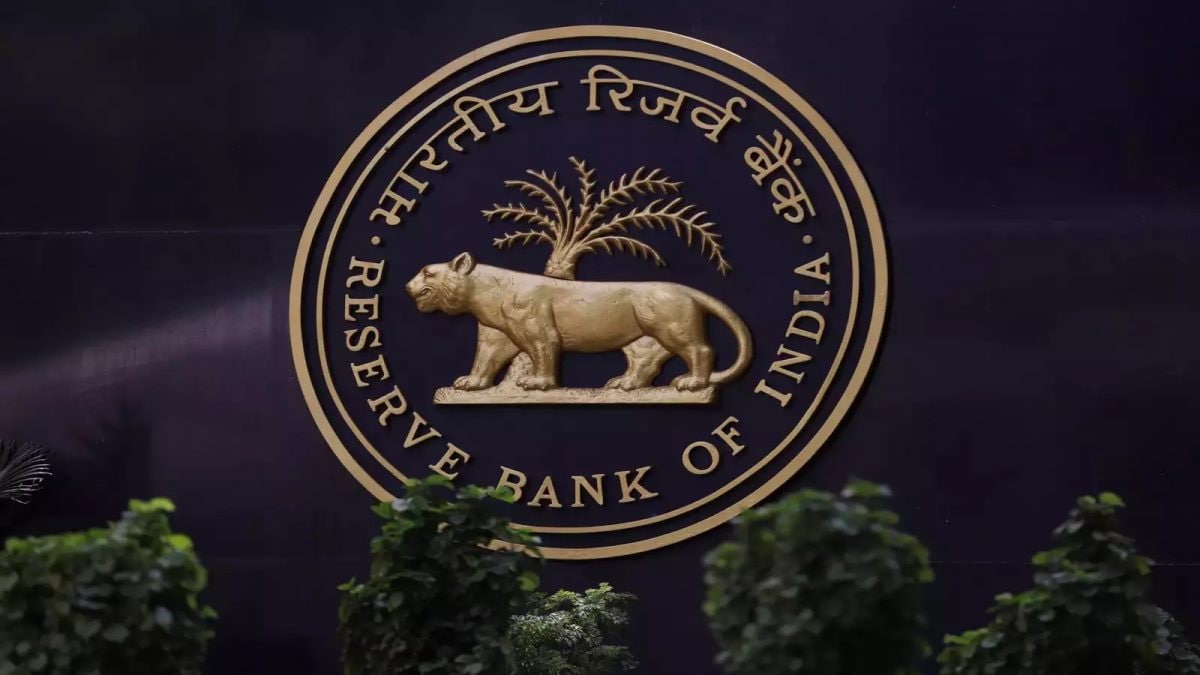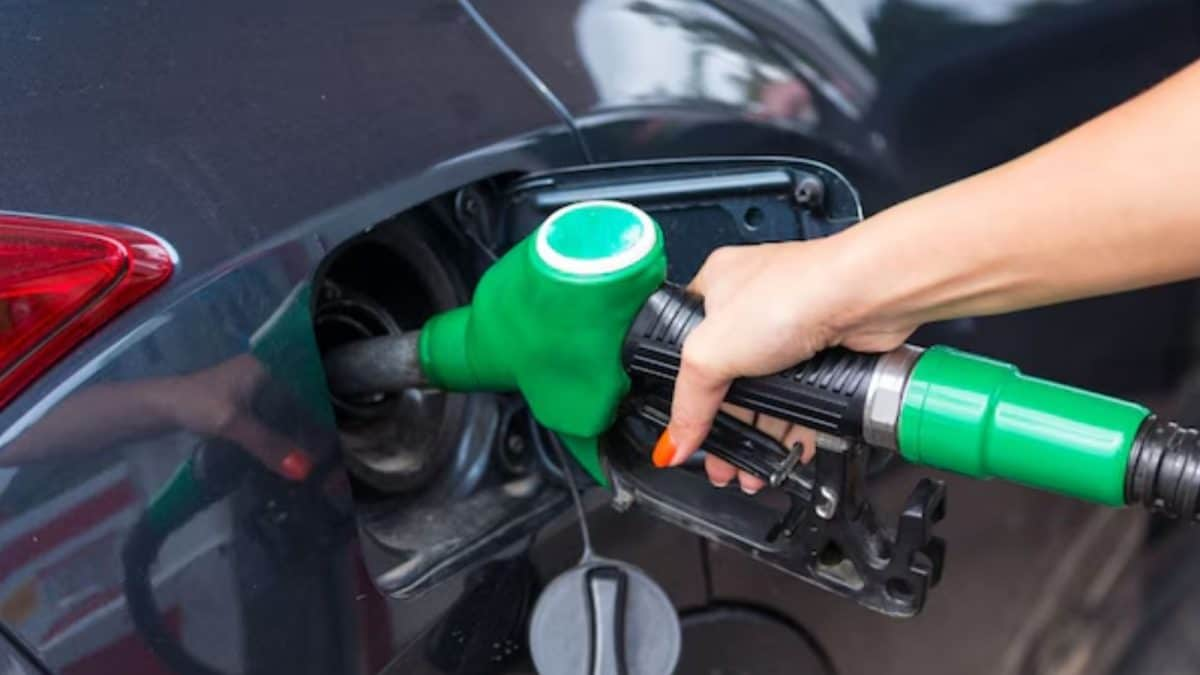Business
Political ad spending expected to hit new record, surpassing 2022 midterms by 20%

(L-R) Mikayla Newton and Katerra Jones, reporters with the Prince George’s County during a news broadcast on May 15, 2025 in Largo, MD.
Michael A. McCoy | The Washington Post | Getty Images
Spending on political advertisements is projected to hit a new record, with this midterm season expected to reach a total of $10.8 billion, according to advertising company AdImpact.
That number for the 2025-2026 midterm season makes it the most expensive midterm cycle in history, surpassing spending for 2021-2022, which clocked in at $8.9 billion, by more than 20%. And it’s inching close to AdImpact’s price tag for the 2024 presidential election cycle, which reached $11.2 billion.
“We anticipate record spending across all race types due to the highly competitive national environment, with congressional spending specifically set to reach new heights,” the report said.
The race to snag control of Congress this year remains close, as Republicans hope to hold onto their 53-47 majority in the Senate and their 219-212 majority in the House. Key races in battleground states could determine or flip those majorities.
This cycle’s boost is largely expected to come from the connected TV, or CTV, category, which covers any television that connects to streaming apps and services. That spending will surge to $2.5 billion, AdImpact said, growing by 2% and earning a spot as the fastest-growing media type.
Broadcast television is forecast to continue to hold the largest share of spending at 49%, and local cable and social media spending are expected to decline slightly, the report said. That comes even as legacy cable TV has been bleeding millions of subscribers each year as streaming takes over as the primary way the world watches television.
“With $2.5 billion projected, CTV is now a core marketing strategy for 2026 campaigns, offering advertisers the ability to maximize both efficiency and overall reach,” said John Link, AdImpact’s senior vice president of data.
The forms of media vary based on types of elections, though, with down-ballot campaigns more likely to invest in cable and radio than larger races, according to AdImpact.
The most spending is expected to be in California, followed by Michigan, Georgia and North Carolina, all of which have highly competitive races this cycle. Advertising on Senate races is projected to reach $2.8 billion, while spending for House races is expected to surpass $2 billion for the first time ever as Republicans aim to hold onto their majority.
The midterm season has also already seen a surge in early spending, AdImpact noted. Though the off-year spending typically only amounts to 10% to 15% of total spending, 2025 has already surpassed records, hitting roughly $900 million by Aug. 26. That’s 37% higher than the same point in 2023 and 58% higher than 2021.
This season’s surge comes amid a particularly charged election cycle. Local elections have also garnered national attention and big spending, like the New York City mayoral race between Democratic nominee and state assemblyman Zohran Mamdani and former Gov. Andrew Cuomo, which has raked in millions in campaign funds and capitalized on social media ads.
Business
After 25 Bps Cut, India At 5.25%: How Policy Rates Compare Across BRICS, US And Other Economies

Last Updated:
At 5.25%, India’s policy rate is higher than the US, UK and Eurozone but far below Brazil and Russia, which still run double-digit rates to fight inflation pressures.
RBI cuts repo rate by 25 bps to 5.25 per cent
India’s Central bank has shifted gears to support the economic momentum and ease lending with a rate cut of 25 basis points in the latest Monetary Policy Committee (MPC) meeting between December 3 to 5. The latest lending benchmark – repo rate – stood at 5.25 per cent after Friday’s 25 bps cut from 5.50 per cent.
The Reserve Bank of India (RBI) governor, Sanjay Malhotra, in his speech on Friday, termed the current economic situation as ‘rare goldilocks period’, stating that inflation is at a benign 2.2 per cent and growth at 8.0 per cent in H1:2025-26.
The standing deposit facility (SDF) rate under the liquidity adjustment facility (LAF) now adjusted to 5.00 per cent and the marginal standing facility (MSF) rate and the Bank Rate to 5.50 per cent. The MPC also decided to continue with the neutral stance.
The repo rate is the interest rate at which banks borrow money from the RBI. When banks face a shortage of cash, they borrow from the RBI by pledging government bonds. The interest the RBI charges on this borrowing is known as the repo rate. If the RBI raises the repo rate, borrowing becomes costlier for banks. If it lowers the rate, banks can access funds more cheaply.
The policy rate is a critical monetary tool utilised by the banks to control money flow into the economy. The Central banks of different countries seek to strike a balance to keep the economic growth momentum and stop inflation from getting out of control.
Comparison of Different Policy Rates As Of Now In Major Economies:
| Country | Interest Rate (Policy Rate) |
| United States | 4.00 % |
| United Kingdom | 4.00 % |
| Eurozone (ECB) | 2.15 % |
| India (RBI) | 5.25 % |
| Japan (BoJ) | 0.50 % |
| Australia (RBA) | 3.60 % |
| Canada (BoC) | 2.25 % |
| China (PBoC) | 3.00 % |
| Brazil (BCB) | 15.00 % |
| Russia (CBR) | 16.50 % |
India’s policy rate stood in align with the developed economies such as USA and UK, while a way too below in comparison to BRICS countries. For instance, Brazil and Russia’s policy rates are in the double digit – 15% and 16.50% respectively, due to run away inflation.
December 06, 2025, 09:34 IST
Read More
Business
Petrol, Diesel Fresh Prices Announced: Check Rates In Your City On December 6

Last Updated:
On December 6, 2025, OMCs updated petrol and diesel prices across cities like New Delhi, Mumbai, and Chennai, reflecting global crude oil trends, taxes, and currency rates.

Petrol, Diesel Prices On December 6
Petrol and Diesel Prices on December 6, 2025: OMCs update petrol and diesel prices daily at 6 AM, aligning them with fluctuations in global crude oil prices and currency exchange rates. This daily revision promotes transparency and ensures consumers have access to the most up-to-date and accurate fuel prices.
Petrol Diesel Price Today In India
Check city-wise petrol and diesel prices on December 6:
| City | Petrol (₹/L) | Diesel (₹/L) |
|---|---|---|
| New Delhi | 94.72 | 87.62 |
| Mumbai | 104.21 | 92.15 |
| Kolkata | 103.94 | 90.76 |
| Chennai | 100.75 | 92.34 |
| Ahmedabad | 94.49 | 90.17 |
| Bengaluru | 102.92 | 89.02 |
| Hyderabad | 107.46 | 95.70 |
| Jaipur | 104.72 | 90.21 |
| Lucknow | 94.69 | 87.80 |
| Pune | 104.04 | 90.57 |
| Chandigarh | 94.30 | 82.45 |
| Indore | 106.48 | 91.88 |
| Patna | 105.58 | 93.80 |
| Surat | 95.00 | 89.00 |
| Nashik | 95.50 | 89.50 |
Key Factors Behind Petrol and Diesel Rates
Petrol and diesel prices in India have remained unchanged since May 2022, following tax reductions by the central and several state governments.
Oil Marketing Companies (OMCs) update fuel prices daily at 6 am, adjusting for fluctuations in global crude oil markets. While these rates are technically market-linked, they are also influenced by regulatory measures such as excise duties, base pricing frameworks, and informal price caps.
Key Factors Influencing Fuel Prices in India
-
Crude Oil Prices: Global crude oil prices are a primary driver of fuel prices, as crude is the main input in petrol and diesel production.
-
Exchange Rate: Since India relies heavily on crude oil imports, the value of the Indian rupee against the US dollar significantly affects fuel costs. A weaker rupee typically translates to higher prices.
-
Taxes: Central and state-level taxes constitute a major portion of retail fuel prices. Tax rates vary across states, leading to regional price differences.
-
Refining Costs: The cost of processing crude oil into usable fuel impacts retail prices. These costs can fluctuate depending on crude quality and refinery efficiency.
-
Demand-Supply Dynamics: Market demand also influences fuel pricing. Higher demand can push prices up as supply adjusts to consumption trends.
How to Check Petrol and Diesel Prices via SMS
You can easily check the latest petrol and diesel prices in your city through SMS. For Indian Oil customers, text the city code followed by “RSP” to 9224992249. BPCL customers can send “RSP” to 9223112222, and HPCL customers can text “HP Price” to 9222201122 to receive the current fuel prices.
December 06, 2025, 07:47 IST
Read More
Business
Frontier to buy B K Birla group co Kesoram – The Times of India

Kolkata: 106-year-old Kesoram Industries, once the flagship of the B K Birla group, is being acquired by Frontier Warehousing, a city-based storage and logistics solutions company. The total value of the acquisition, as per stock exchange filings, would be close to Rs 100 crore.Frontier-owner Gautam Agarwal, told TOI he is drawing up plans for Kesoram, which now has transparent paper, rayon, and chemicals businesses.Frontier proposed to launch an open offer late on Thursday for the acquisition of 26% stake in Kesoram at Rs 5.5 per share, aggregating to a consideration of Rs 44.2 crore. On Friday, Kesoram’s share on BSE was up 19%. — Udit Prasanna Mukherjee
-

 Sports5 days ago
Sports5 days agoIndia Triumphs Over South Africa in First ODI Thanks to Kohli’s Heroics – SUCH TV
-

 Tech6 days ago
Tech6 days agoGet Your Steps In From Your Home Office With This Walking Pad—On Sale This Week
-

 Fashion5 days ago
Fashion5 days agoResults are in: US Black Friday store visits down, e-visits up, apparel shines
-

 Entertainment5 days ago
Entertainment5 days agoSadie Sink talks about the future of Max in ‘Stranger Things’
-

 Politics5 days ago
Politics5 days agoElon Musk reveals partner’s half-Indian roots, son’s middle name ‘Sekhar’
-

 Tech5 days ago
Tech5 days agoPrague’s City Center Sparkles, Buzzes, and Burns at the Signal Festival
-

 Sports5 days ago
Sports5 days agoBroncos secure thrilling OT victory over Commanders behind clutch performances
-

 Entertainment5 days ago
Entertainment5 days agoNatalia Dyer explains Nancy Wheeler’s key blunder in Stranger Things 5














